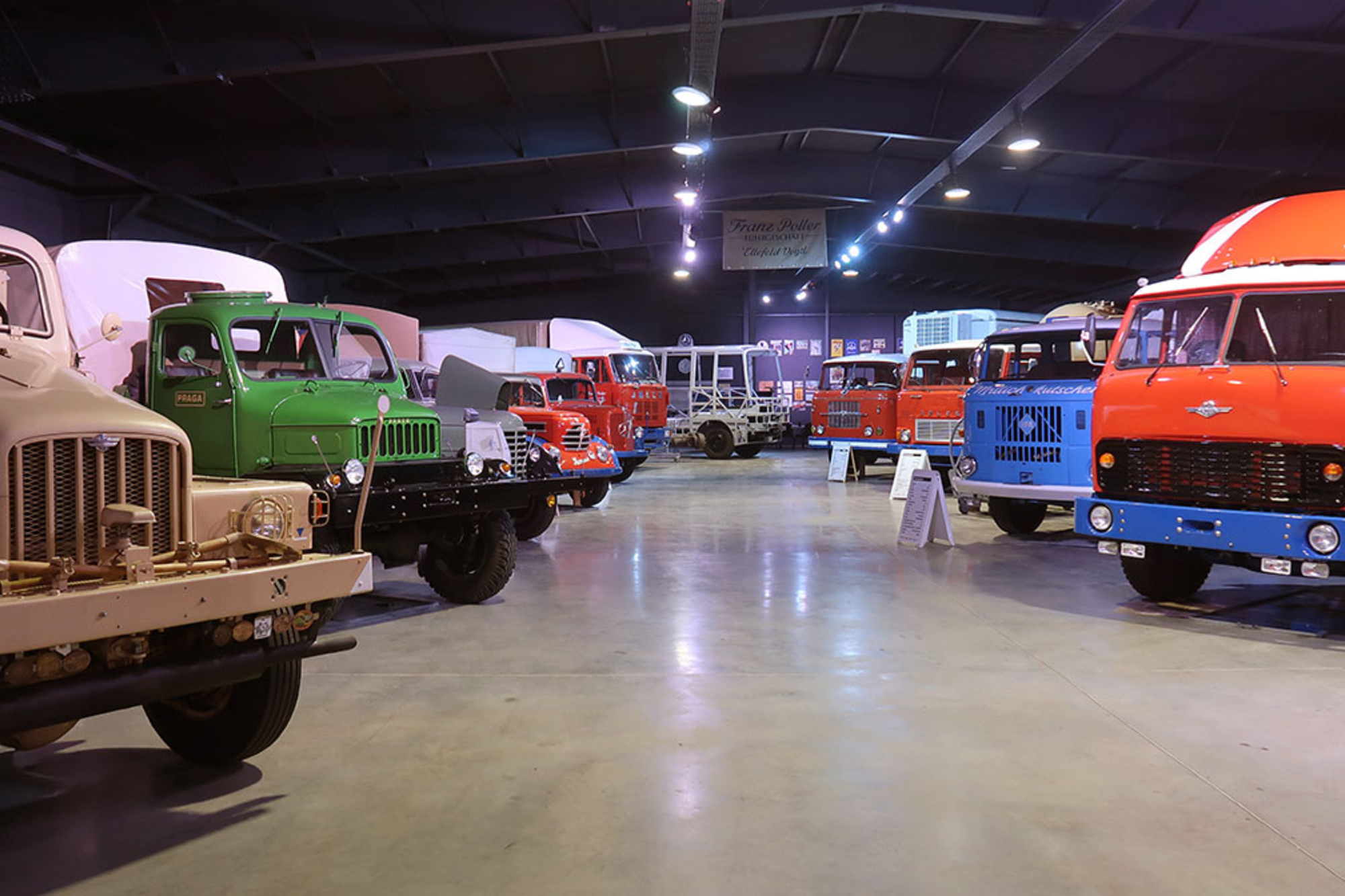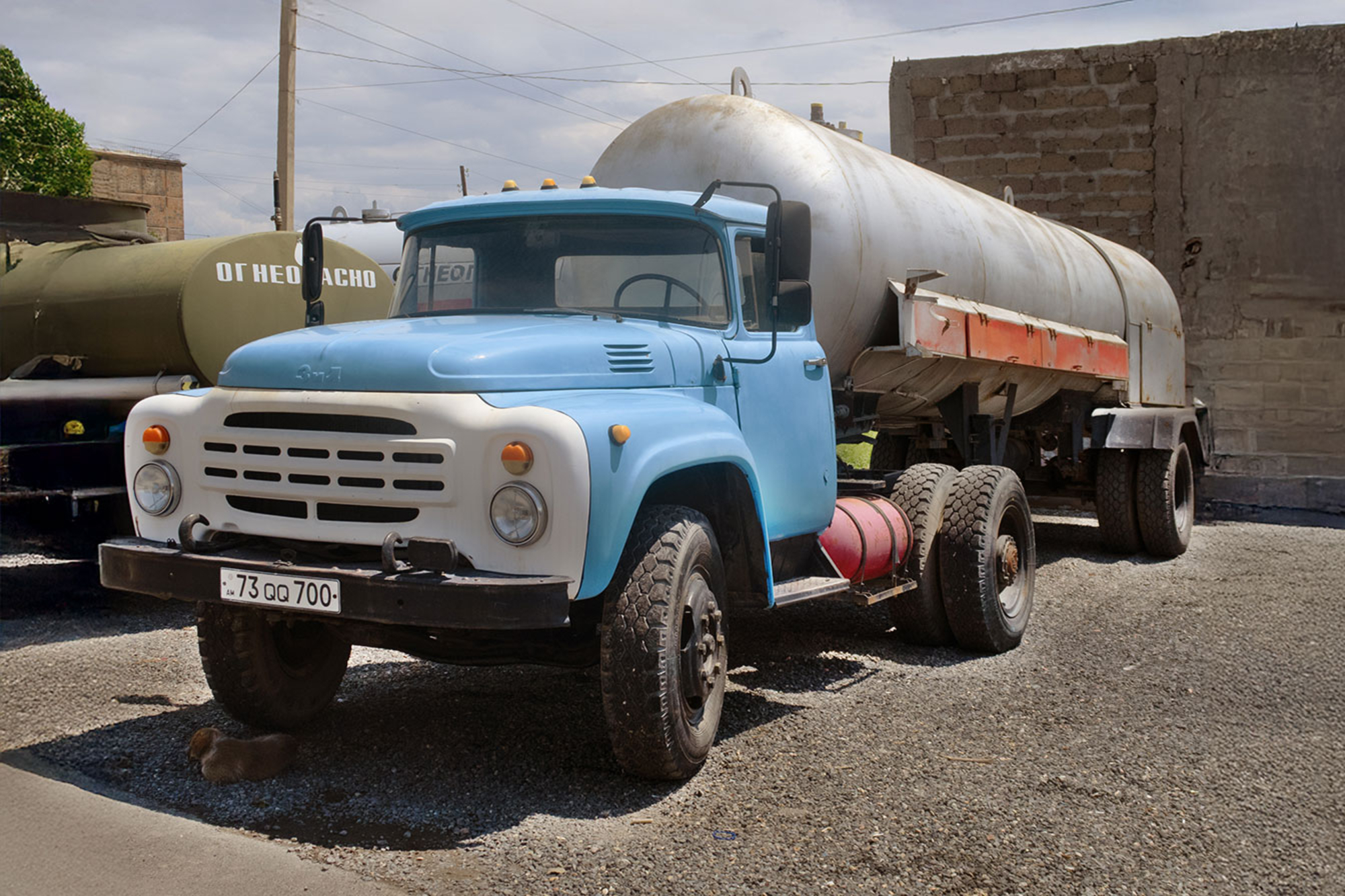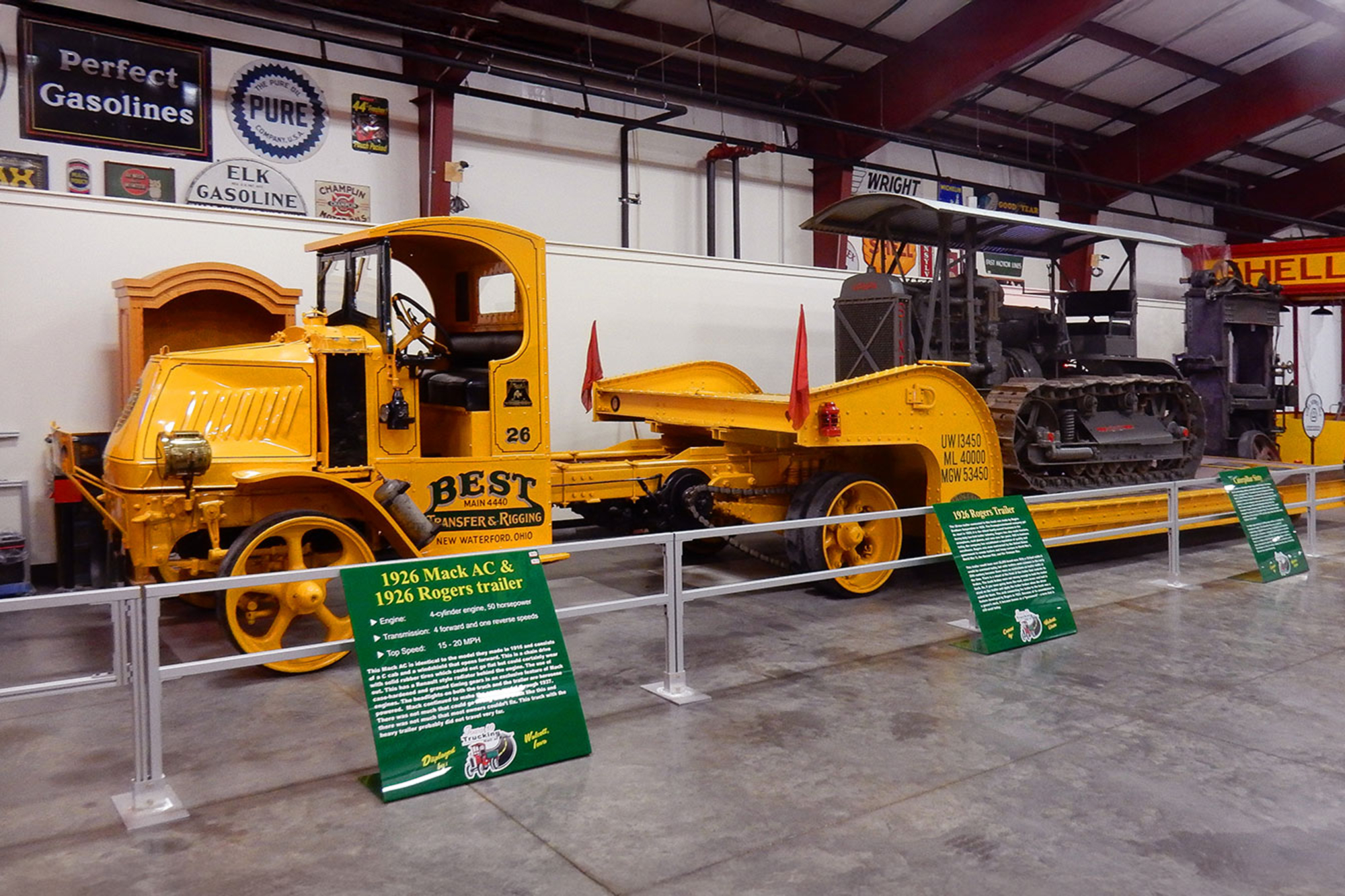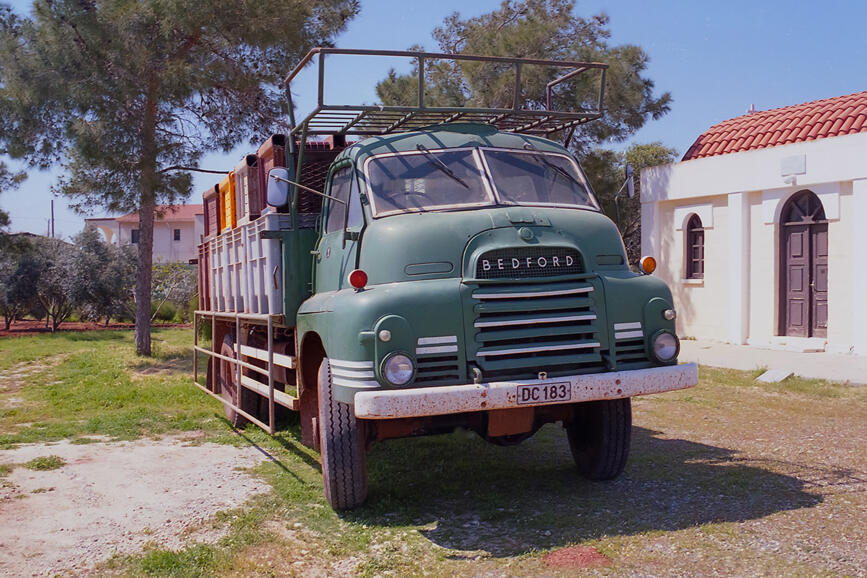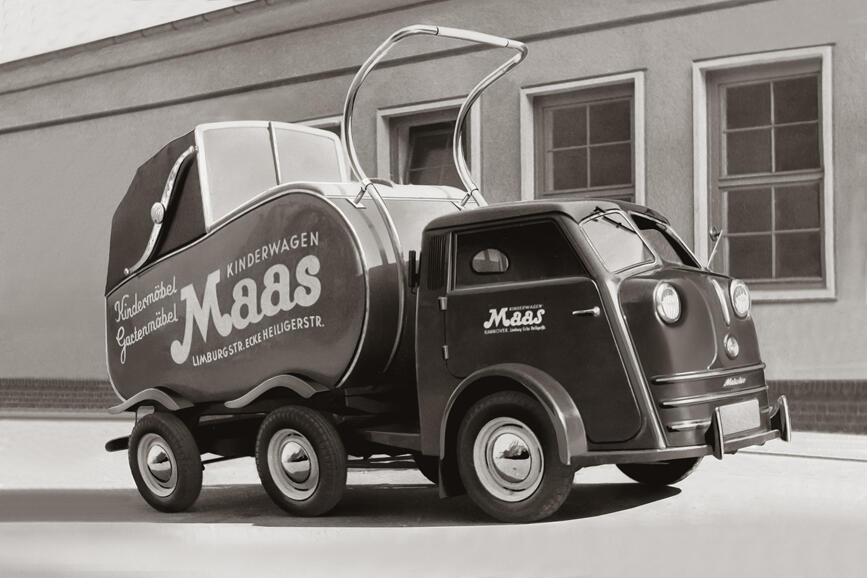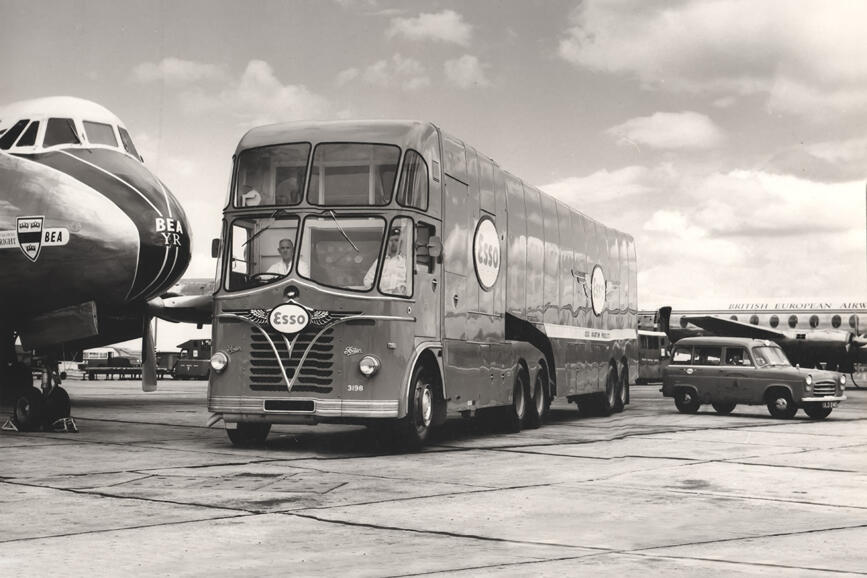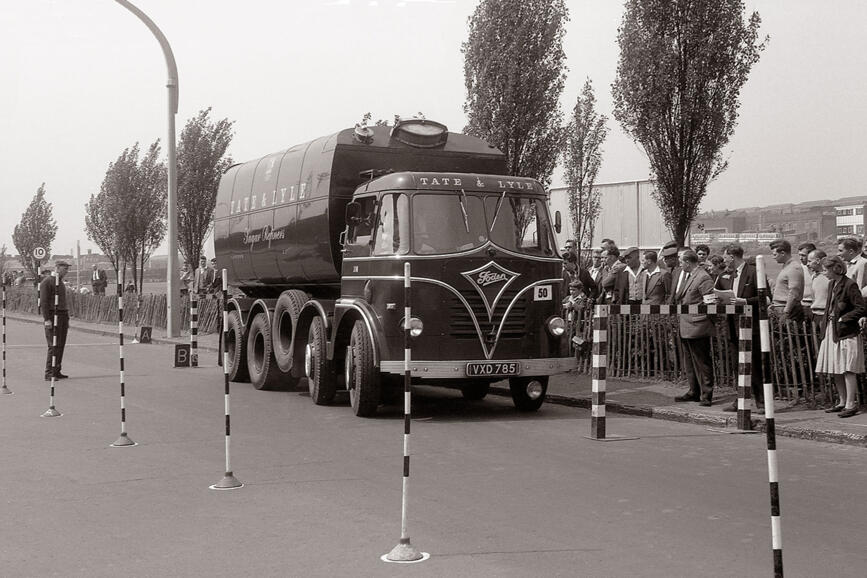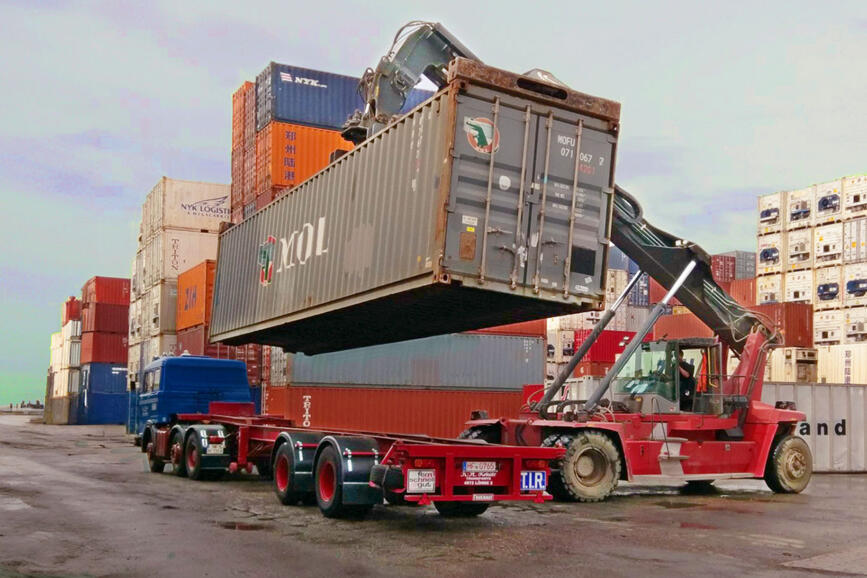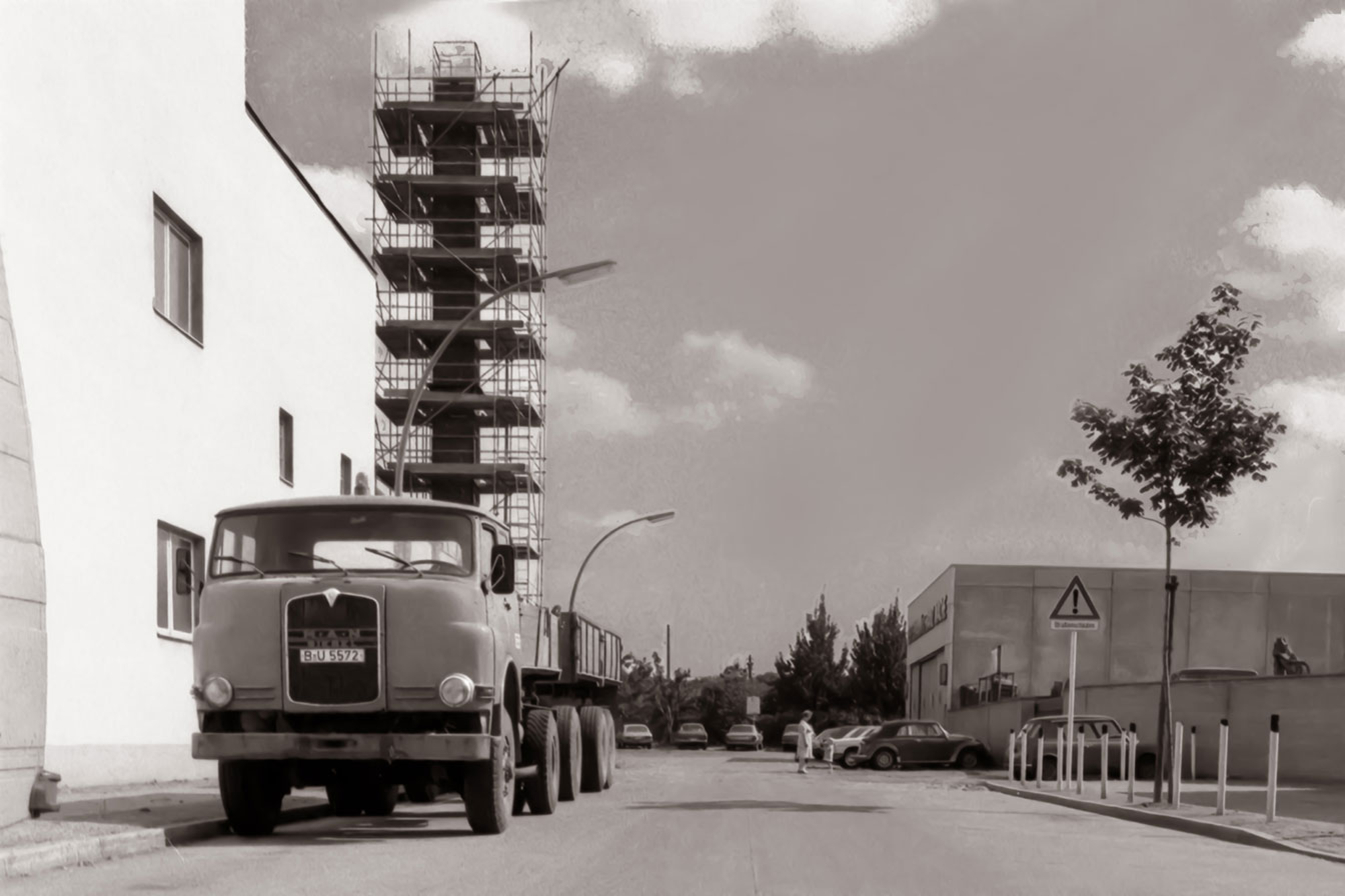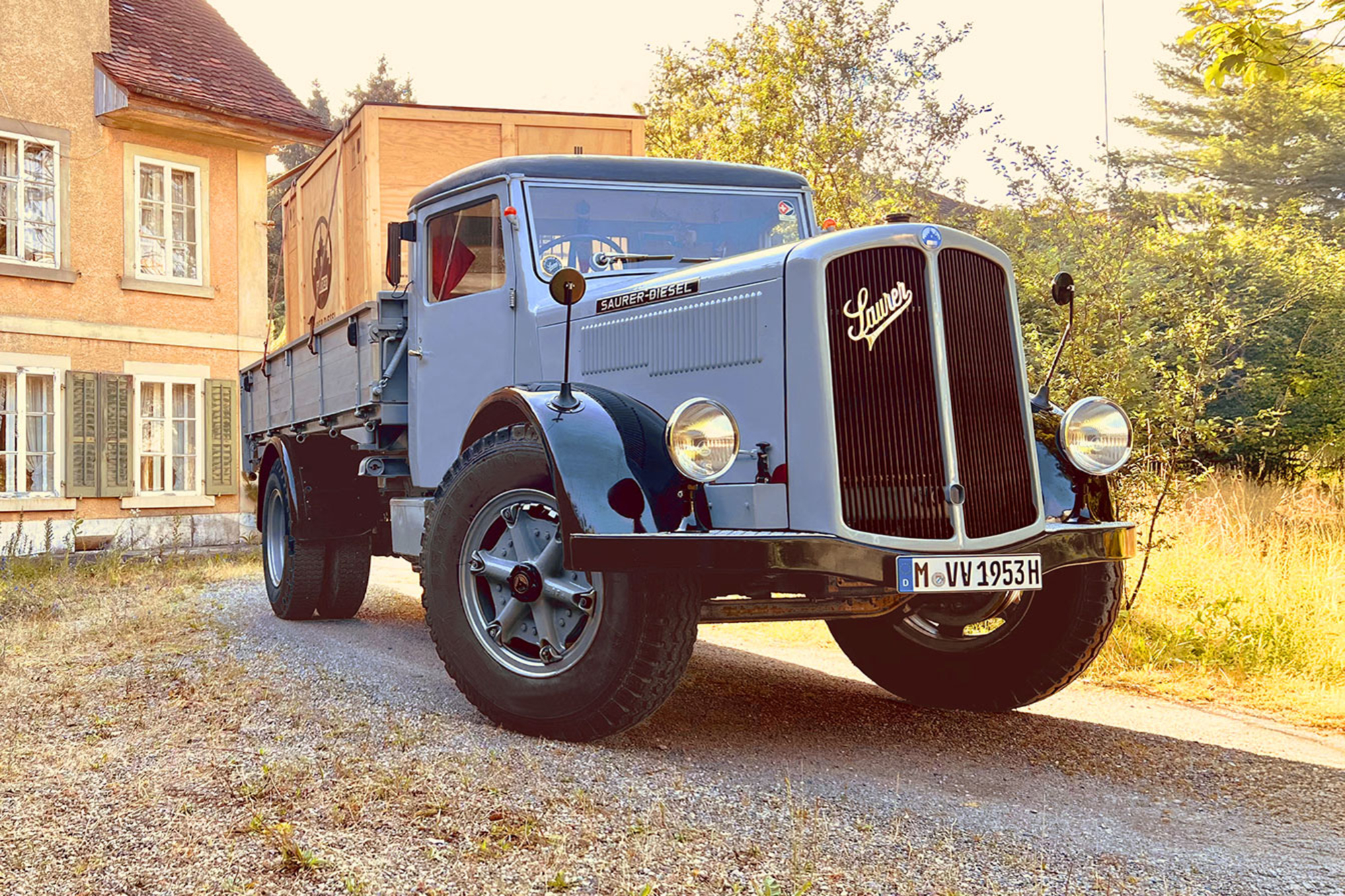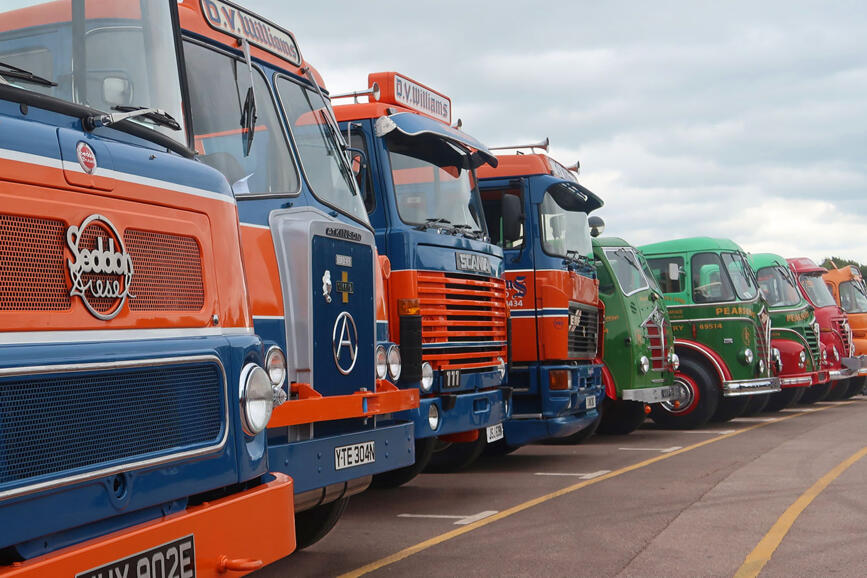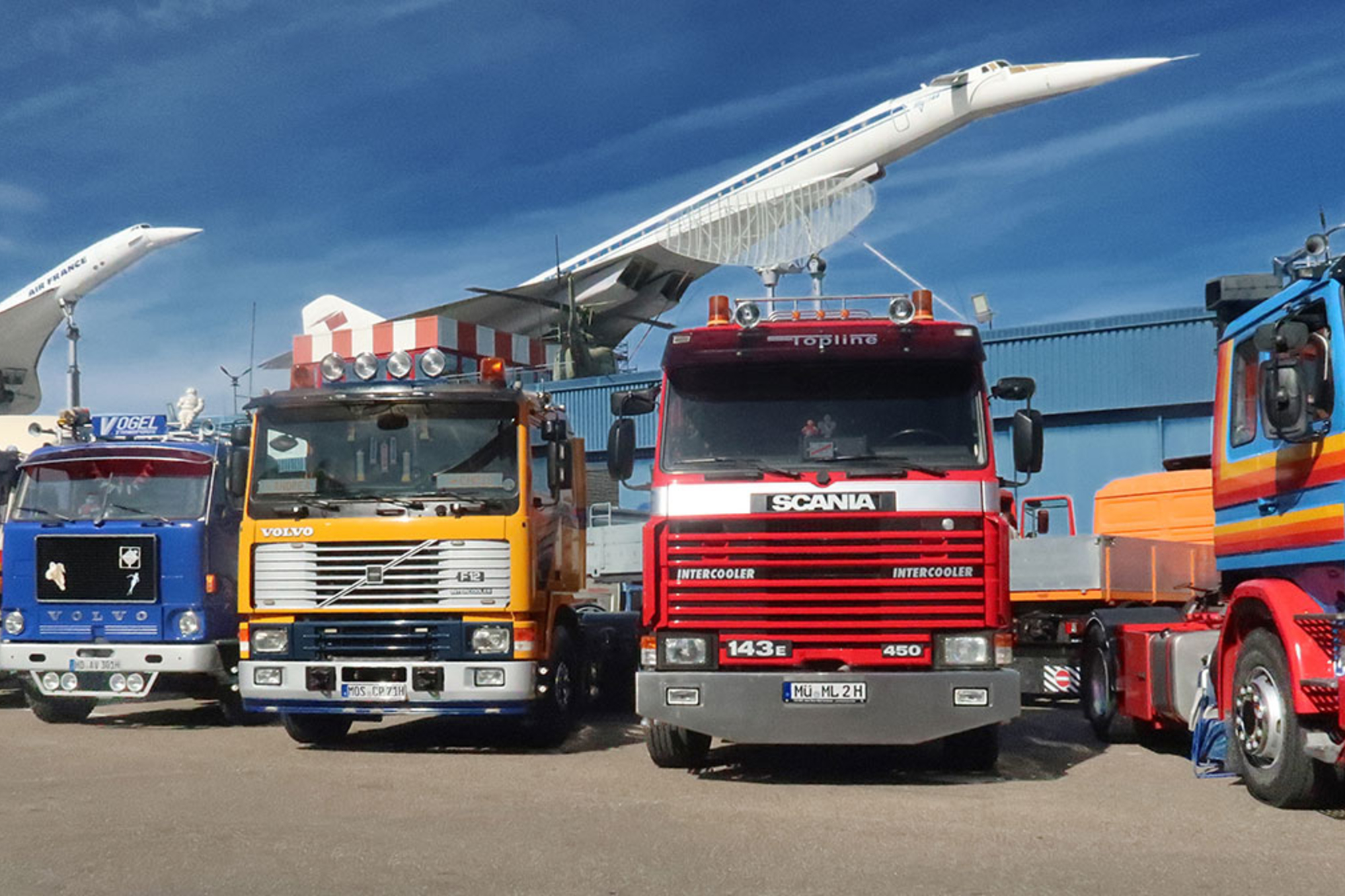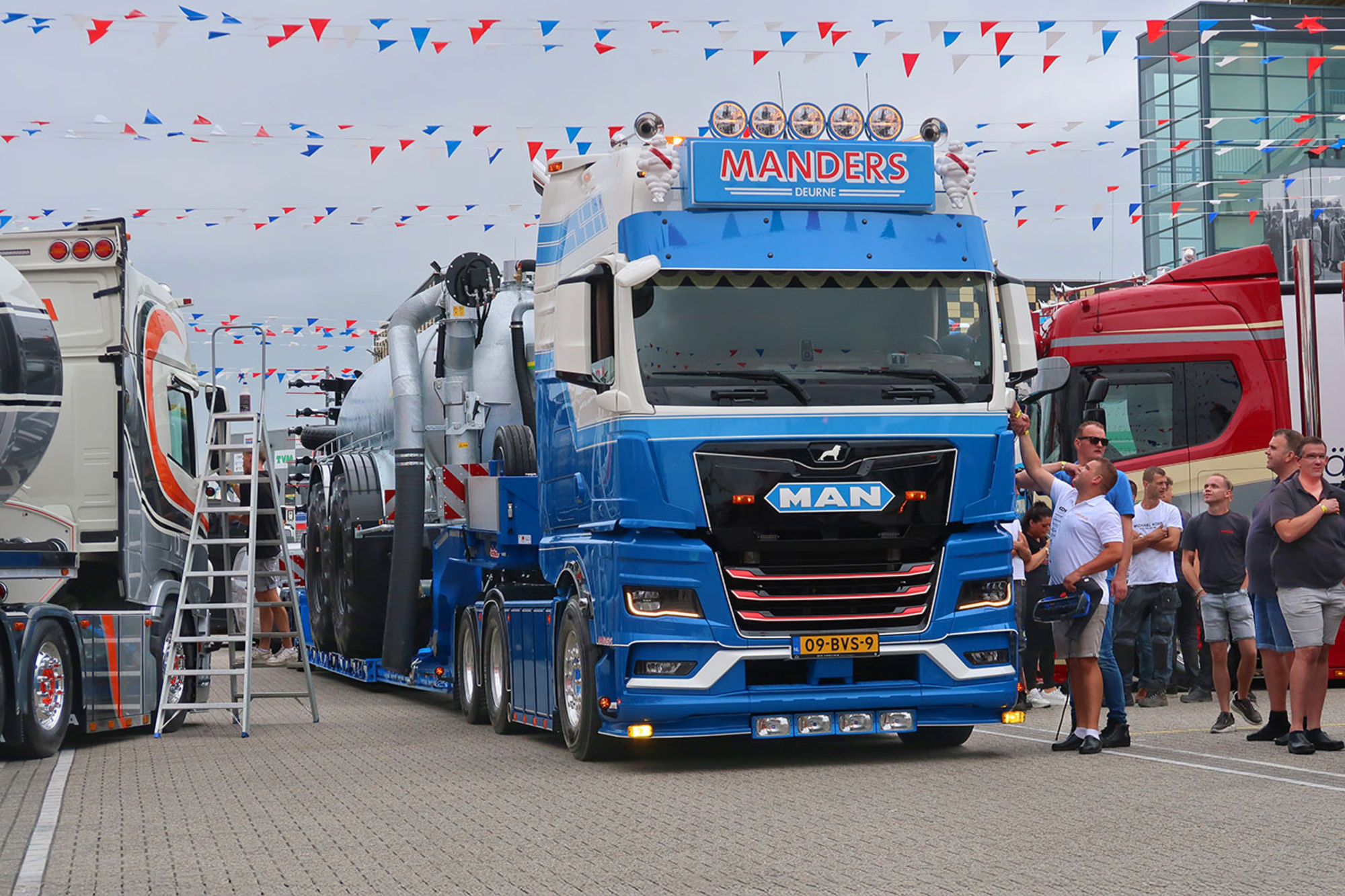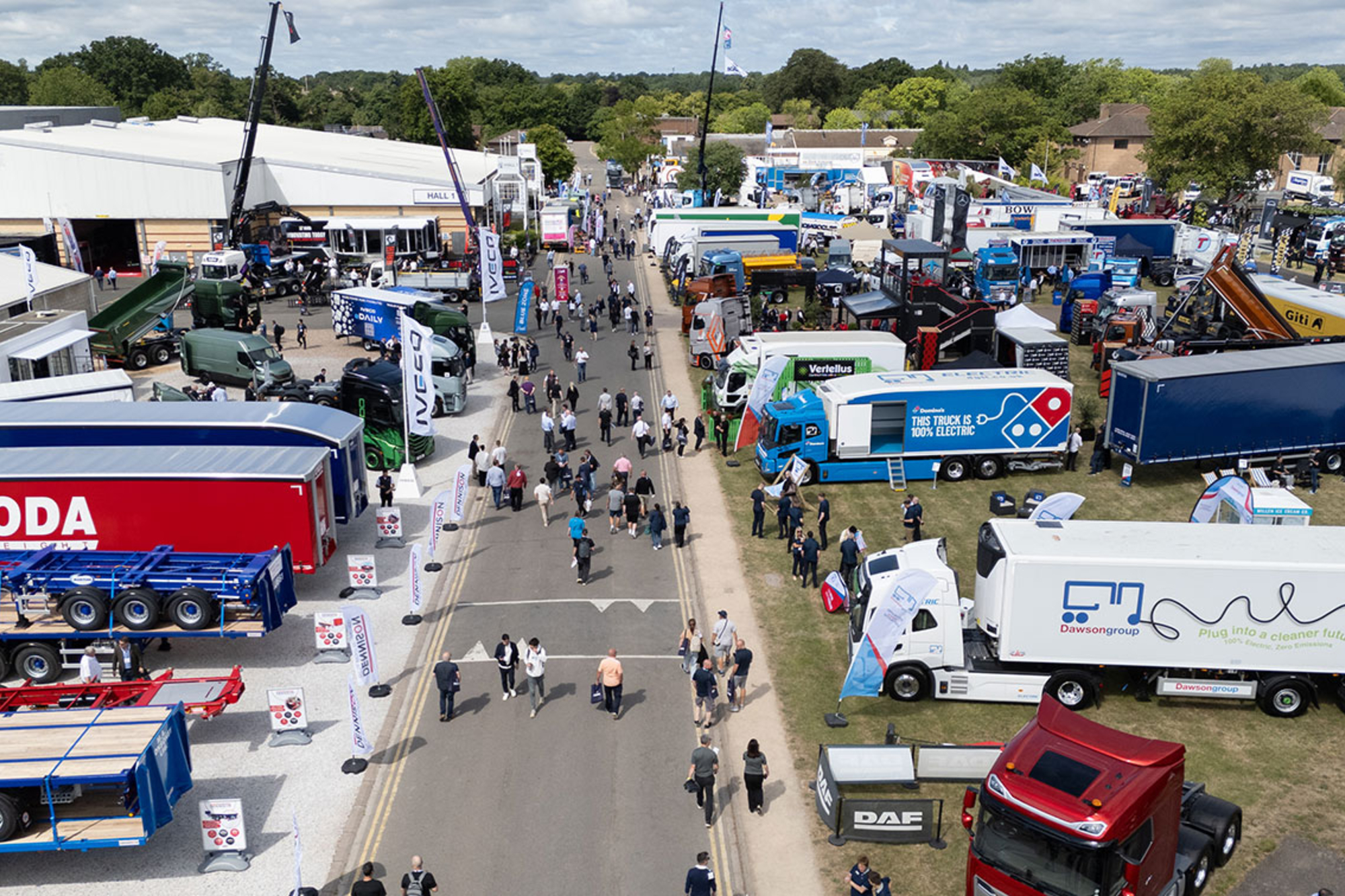Historic construction site at the Brecht gravel works near Philippsburg 2024
Construction machinery, dump trucks, light rail and models in action - a family festival
For the 17th time, a special kind of classic vehicle festival took place on the site of a southern German gravel works between Mannheim and Karlsruhe. Participants were able to let off steam with their historic vehicles and construction machinery to their heart's content and spectators were invited to marvel at the colorful goings-on without barriers and fluttering ribbons. In addition, the meeting was, as always, characterized by a variety that could hardly be surpassed. Andreas Fehsenmeier and his son Linus from Heidelberg were there for truckinfocus.com and sent us an interesting report with great photos.
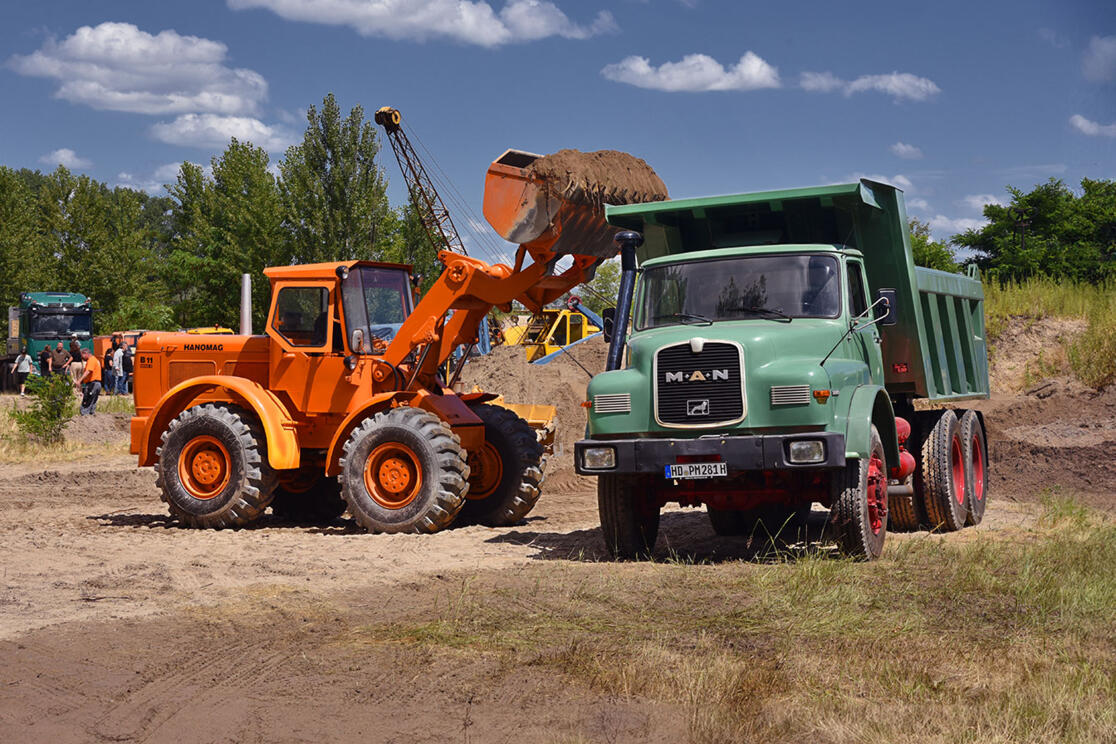
On July 7, 2024, the time had come again and the active “Interest group historical construction machinery“ invited visitors to the former Brecht gravel pit near Philipsburg in southern Germany in perfect weather, after it had rained heavily the day before.
Idyllically situated in the floodplains of the Old Rhine, the extensive grounds offered plenty of space for the participants' and visitors' strong play instinct. In a wonderfully relaxed atmosphere and without any strict regulations, they could dig, excavate, tilt, push, load and unload, pump and even swim in the adjacent Lake Brecht to their heart's content. But even those who hadn't brought any suitable play equipment with them and had only come to watch as visitors got their money's worth.
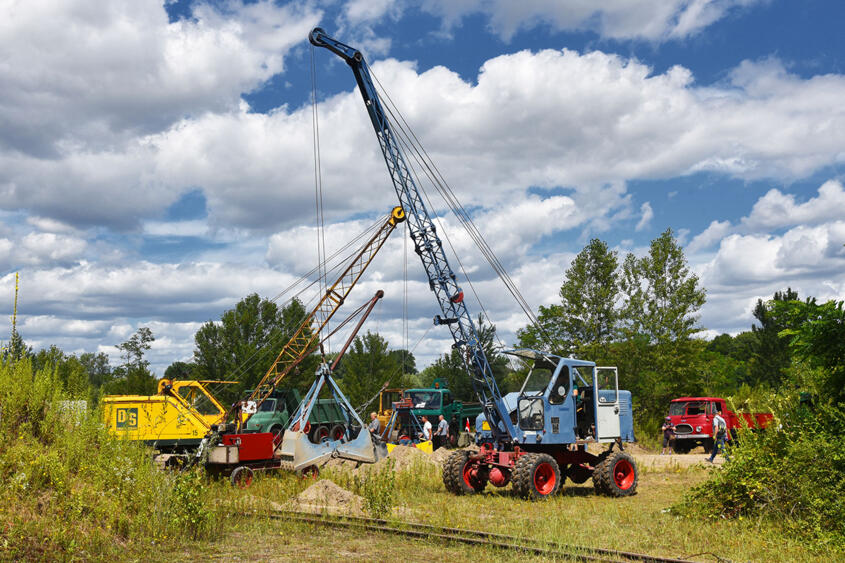
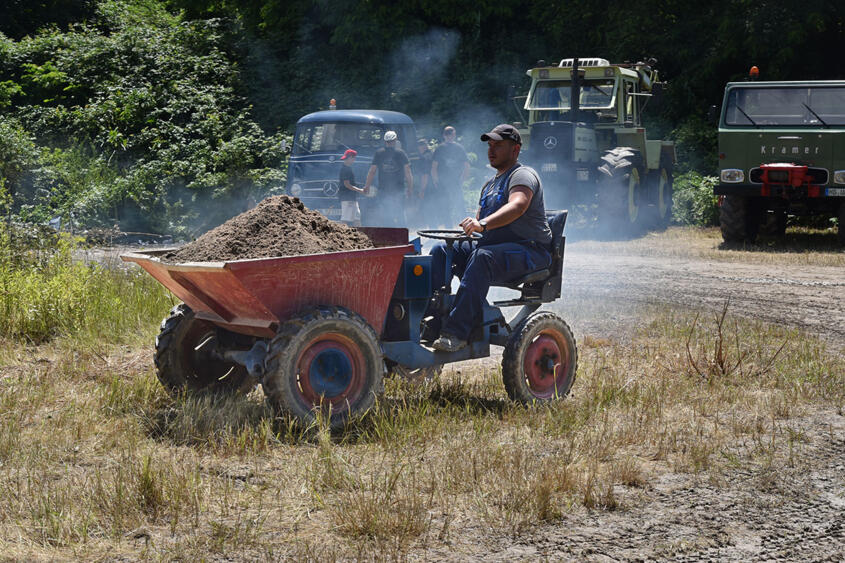
No matter how many laps you made of the grounds, there was always something new to discover. A new construction site was guaranteed to be opened somewhere or a fleet of new vehicles rolled up to get involved in the action. The numerous cable and chain excavators were busy shoveling away mounds of sand, which were then piled up again elsewhere. Either the large tippers or the light railroad, which ran through the middle of the site with its wagons on specially laid tracks, took care of the transportation. Numerous small dumpers were also in use as means of transportation, busily doing their rounds.
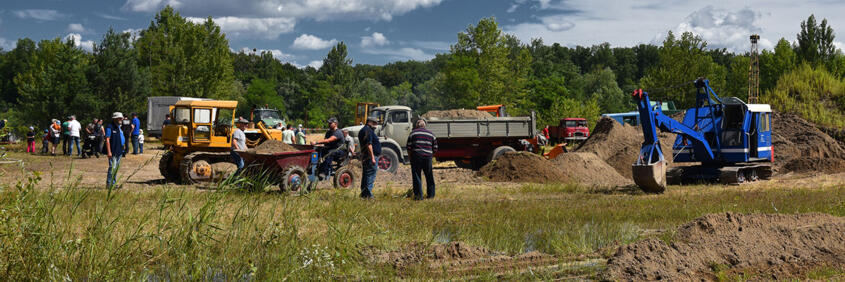
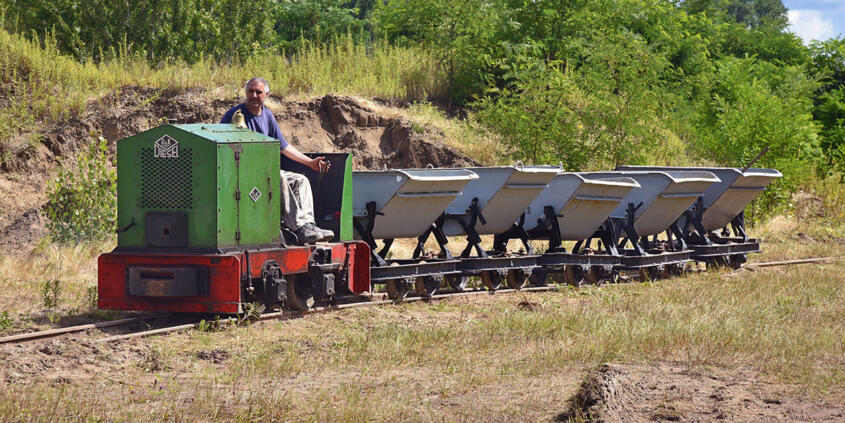
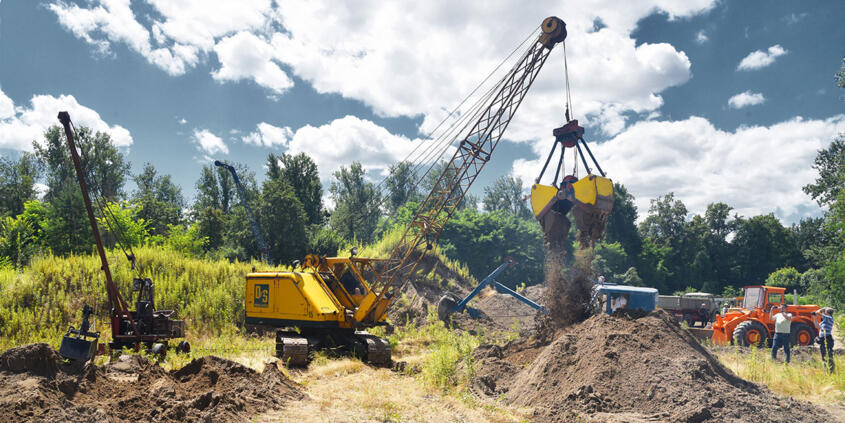
But things could be even smaller, because opposite the catering area, a historical construction site was recreated with numerous models, some of them remote-controlled, on a scale of 1:160 to 1:10. With several piles of sand and a loading facility, a perfect diorama had been created for the models, in which excavating, tipping, loading and unloading was constantly taking place. It was not only the attention to detail of the models that was impressive, but also how deceptively real they looked when the professional model builders steered them through the site by radio remote control.
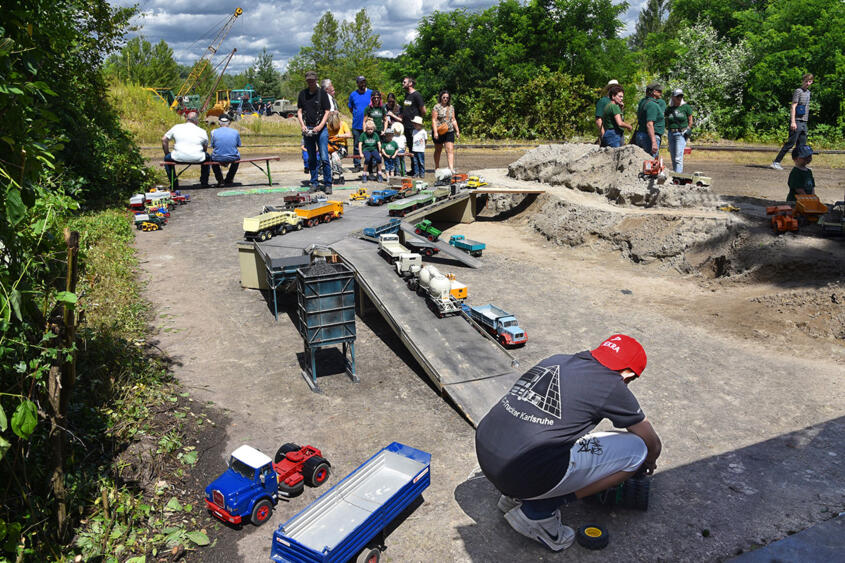
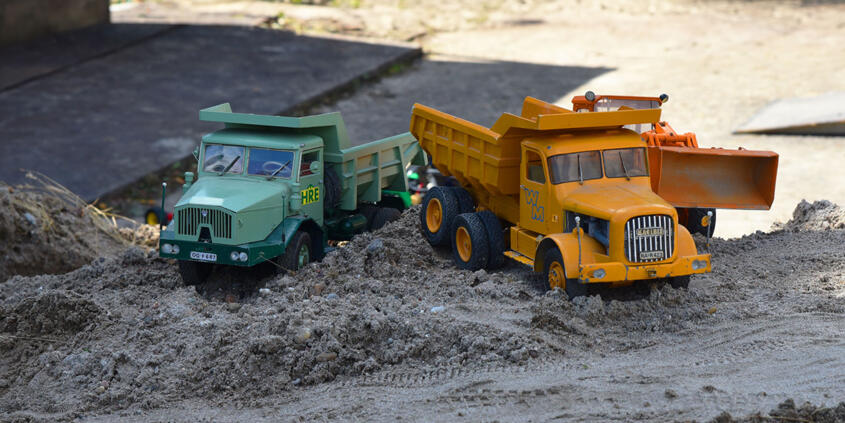
As in previous years, not only active construction vehicles and machines were on display. All historic trucks were welcome, even if they could not tilt, had a box body or even a fire ladder body. A Metz turntable ladder with its telescopic platform was a popular platform for the brave who wanted to observe or photograph the action from lofty heights.
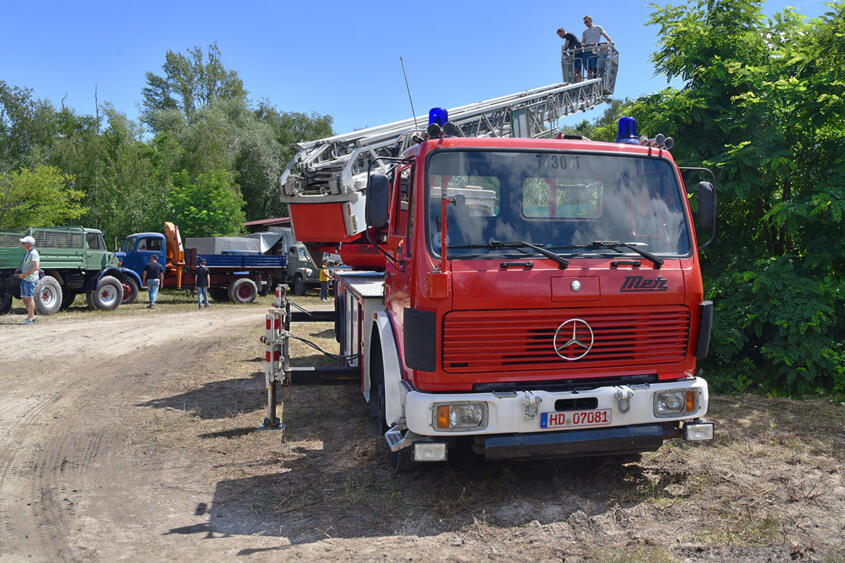
Overall, the pleasantly colorful mix of truck brands from Saurer to Scania, Kramer, Büssing, Borgward, Magirus, Henschel, Volvo and Robur provided variety.
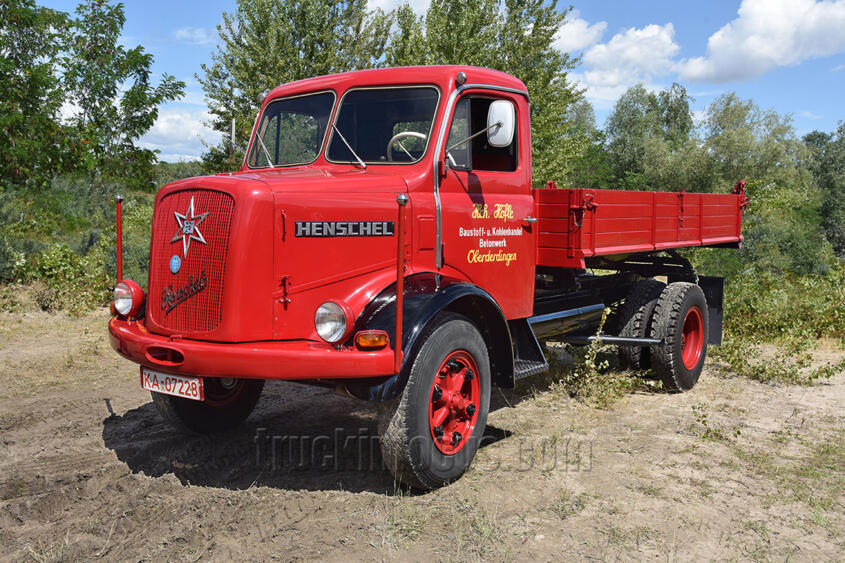
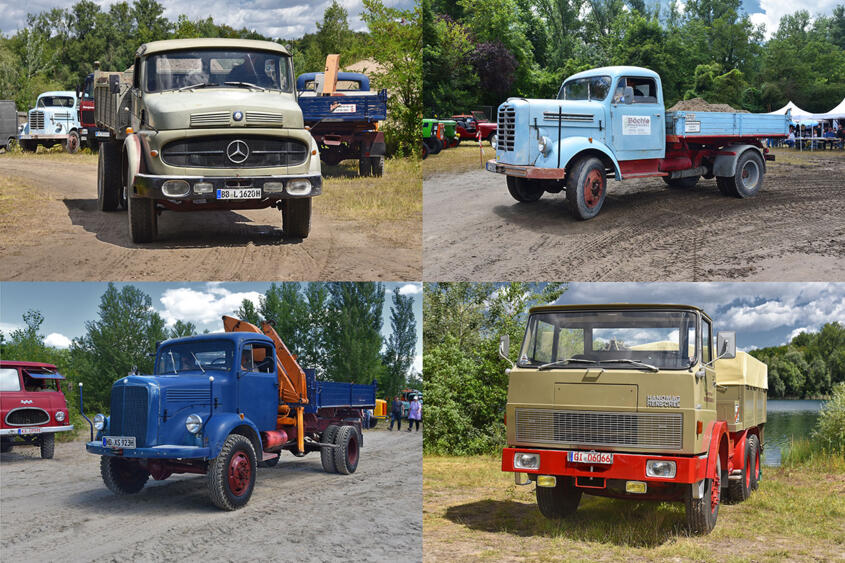

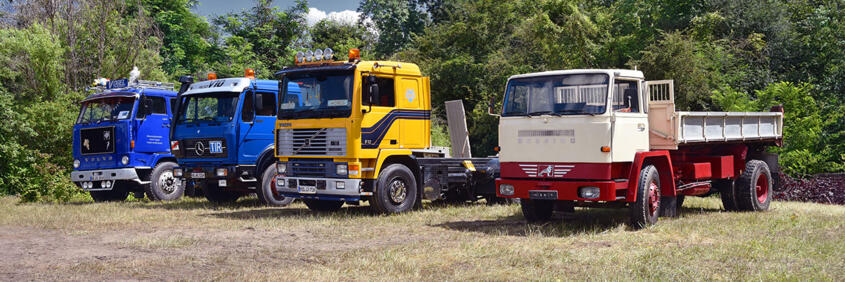
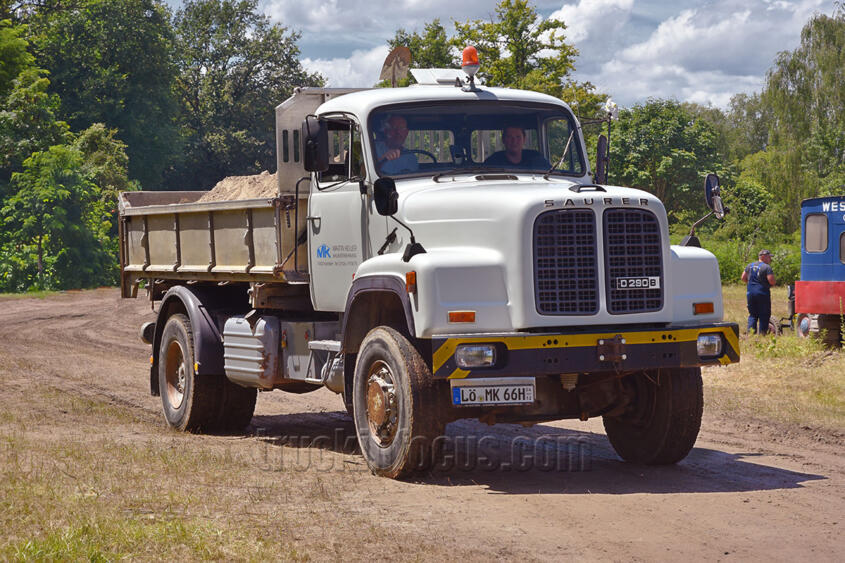
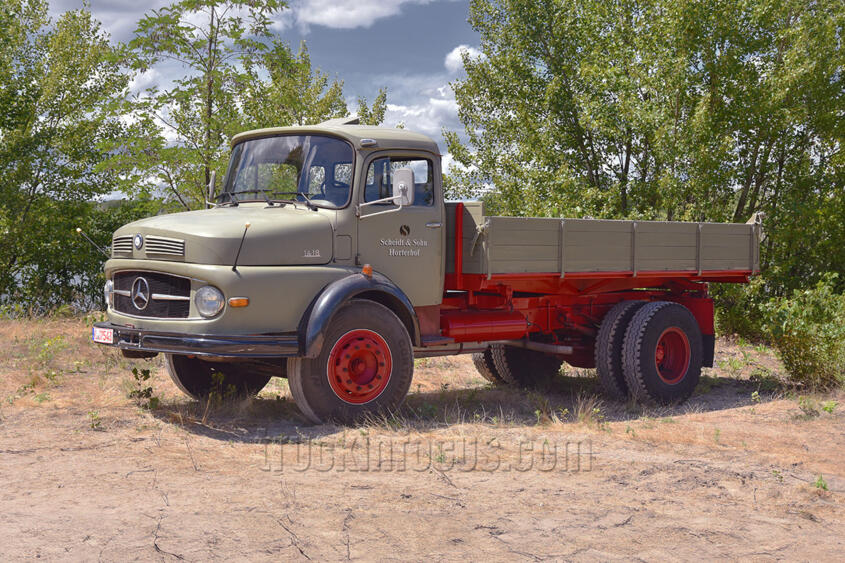
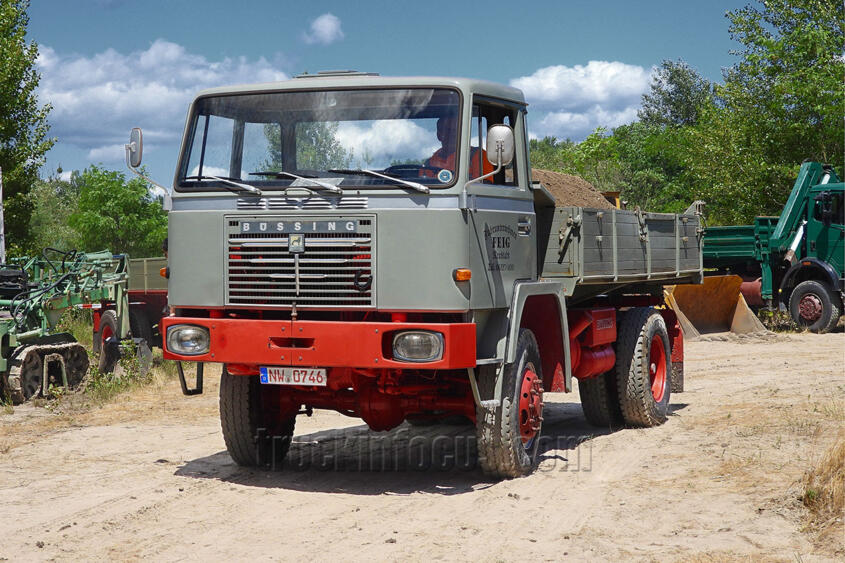
And as varied as it is in the gravel pit, there was also room for a number of tractors from “Bulldog Friends Stutensee“, who paid the meeting an extensive visit with their tractors decorated for the European Football Championship.
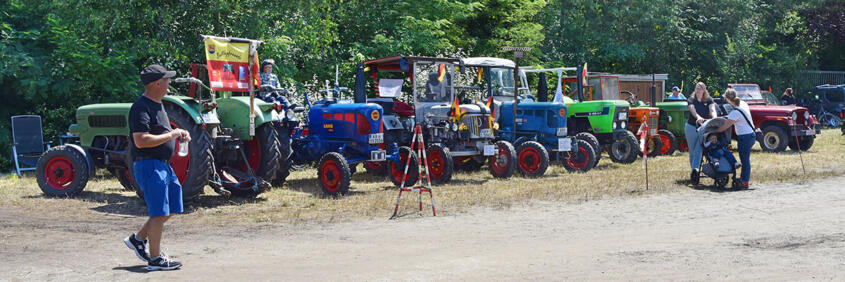
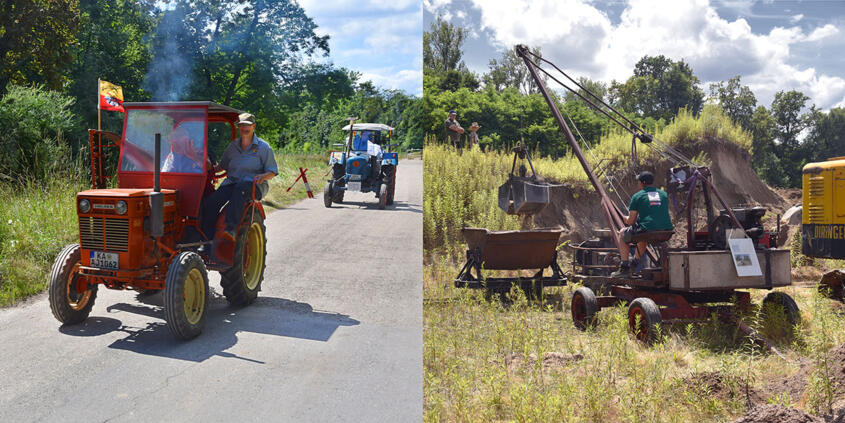
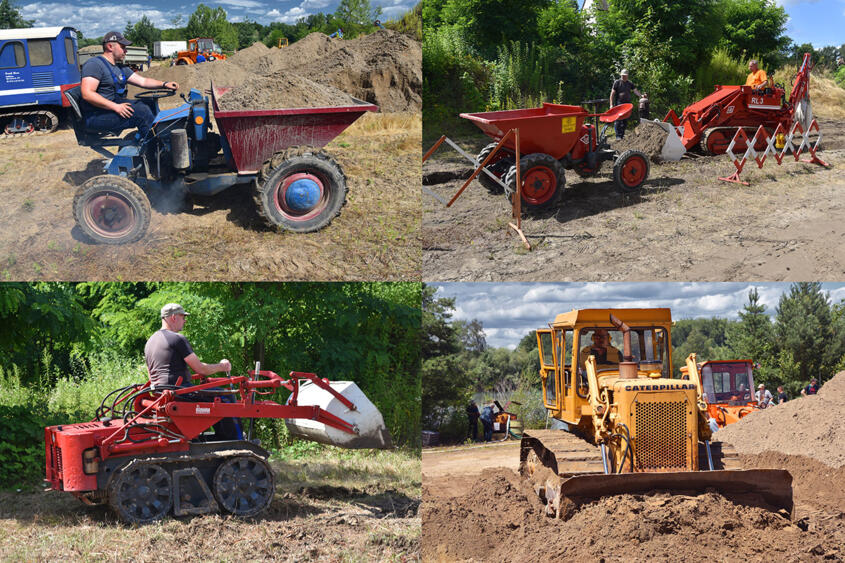
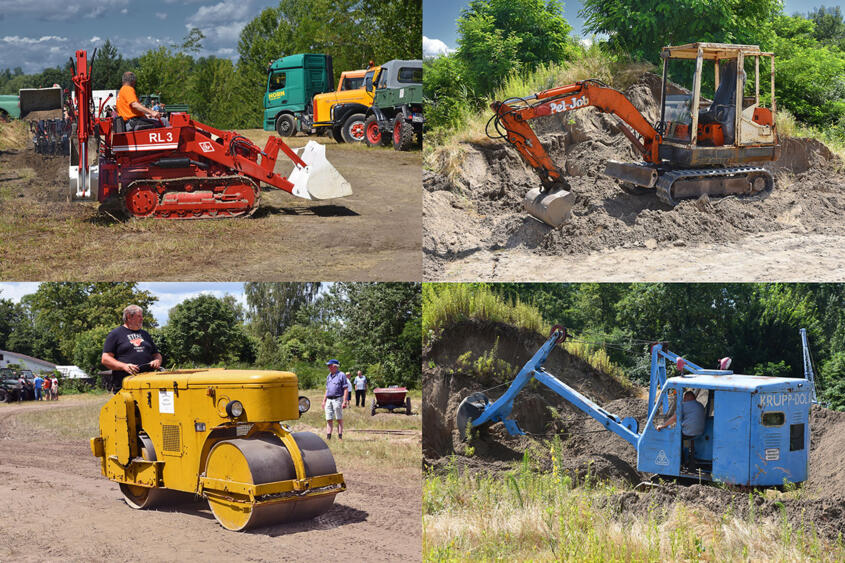
But that was by no means the end of the variety, even an old Speck water pump, powered by a Deutz evaporator, had found its place at the lake and tirelessly pumped water out and back into the lake with the fire engine. Next to it was a Ziegler fire pump with a sprayer, which the youngest visitors could use to practise being a fireman.
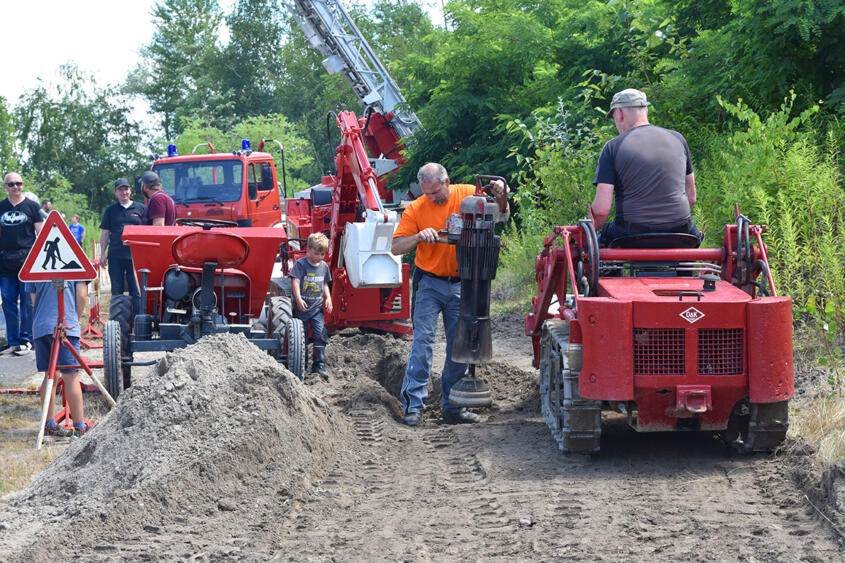
Incidentally, it is almost a trademark of the festival that there are no barriers, fluttering ribbons or visitor areas. So the photographers had free rein. Everything and everyone moved freely and completely relaxed on the site between vehicles, machines and construction sites.
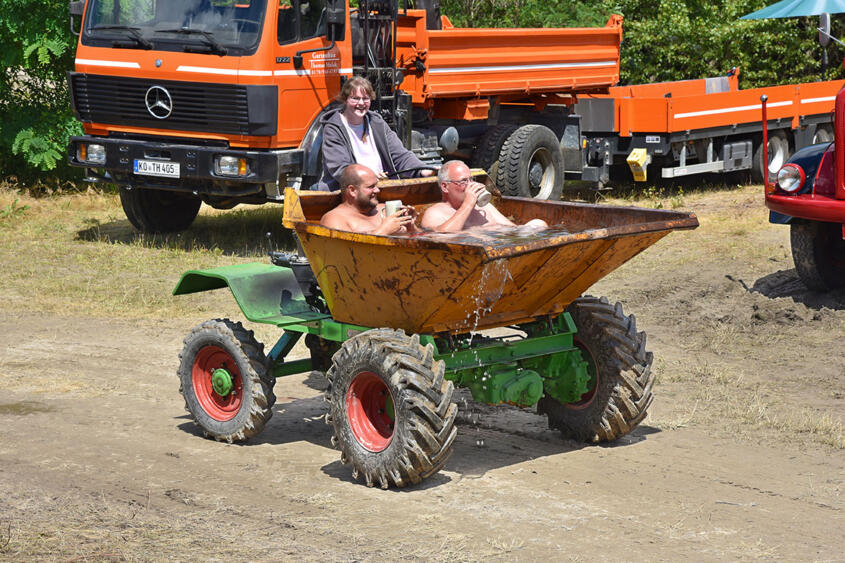
Want even more fun? Always possible in at the site: in the middle of the hustle and bustle, a small ride-on dumper tirelessly made its rounds, its load in the heat? water, of course! But with contents! Two cheerful fellows, who drove round and round the grounds, brrrr, in the end more than just the beer was well chilled - cheers!
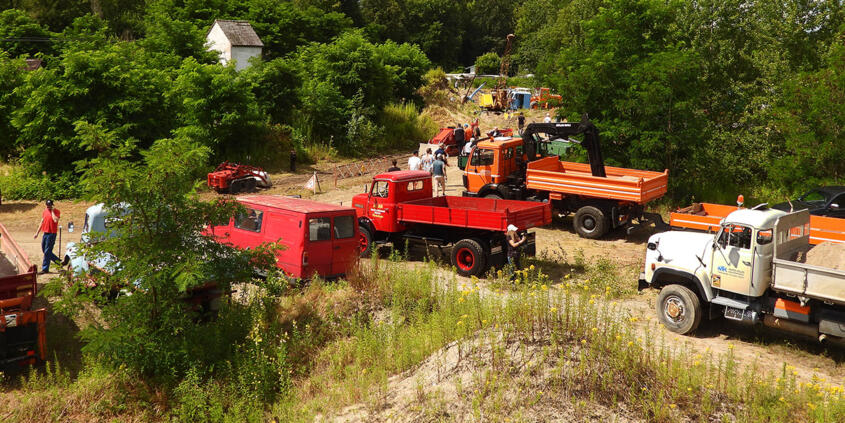
It remains to mention the first-class catering provided by the club members in and around some of the garages and equipment sheds. Delicious food from the barbecue, home-made sausage salad and home-baked cakes ensured that everyone got their money's worth.
Conclusion: A super relaxed family festival for the entire vintage commercial vehicle community and all fans - we are already looking forward to next year!
